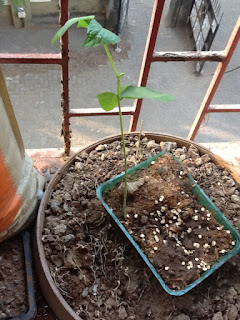It is summer time and more than the last year I am feeling the heat more this year. Last year when I came back to Mumbai I was fearing being hit by the heat but the summers just passed away. This year I am deliberate in attempting to make lots of cold drinks for us to sip on especially in the afternoon instead of tea.
Here is a post by my dear blogger buddy Saee, on how Kokum juice concentrate is made just the way it is made traditionally in the villages of the Konkan region of Maharashtra.
I haven't gone to Thal in a while and no fresh Kokum for me yet. So I use the Kokum juice that comes in a plastic can to make this thirst quencher.
Ingredients
300 ml Kokum juice concentrate
700 ml chilled water
1/2 a lime
1/4 teaspoon pink salt
few sprigs of fresh mint
Ice cubes
In a glass jar measure out the kokum juice concentrate. It is all natural fruit preserved in sugar. Since this concentrate is made in sugar you won't need extra sugar to make the sarbat.
Squeeze into it half a lime. The lime should be thin skinned and juicy to lend a nice citrus twist to it.
Add pink salt, this sets off the sweetness a hint and lends a balance.
Crush the mint between your palm and add to the jar.
Top up with the water to get 1 litre of sarbat.
Add ice cubes into the glasses and fill them to the brim as you hand out the sarbat to a parched soul as the person steps into your home.
In summers in the Kokan this Kokum sarbat is the welcome juice of choice due to the abundance of this fruit. It is called Ratambe (plural) in the local dialect. Funny that we love our Hapoos and Payari so much yet this completely different fruit with it cooling properties and antacid effect is called Ratamba (singular) or mango of the night. It must be simply because we love both the mangoes and the night mangoes equally!
Look for Kokum sarbat in any Marathi locality in Mumbai or tell your Mango supplier, I am sure he will get you a drum of Kokum sarbat concentrate.
Make a glass won't you!
Make a glass won't you!








































